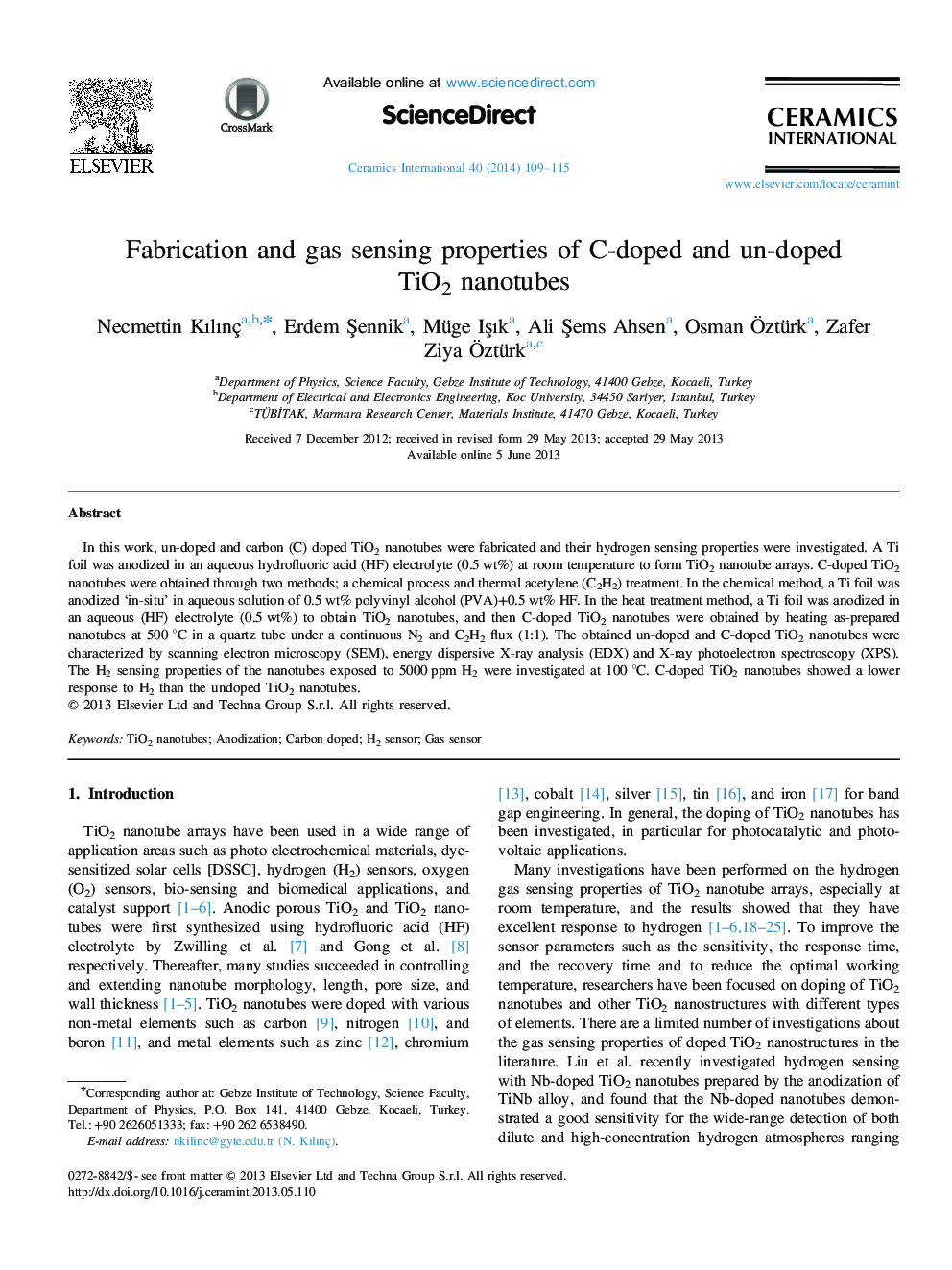| Article ID | Journal | Published Year | Pages | File Type |
|---|---|---|---|---|
| 1462237 | Ceramics International | 2014 | 7 Pages |
In this work, un-doped and carbon (C) doped TiO2 nanotubes were fabricated and their hydrogen sensing properties were investigated. A Ti foil was anodized in an aqueous hydrofluoric acid (HF) electrolyte (0.5 wt%) at room temperature to form TiO2 nanotube arrays. C-doped TiO2 nanotubes were obtained through two methods; a chemical process and thermal acetylene (C2H2) treatment. In the chemical method, a Ti foil was anodized ‘in-situ’ in aqueous solution of 0.5 wt% polyvinyl alcohol (PVA)+0.5 wt% HF. In the heat treatment method, a Ti foil was anodized in an aqueous (HF) electrolyte (0.5 wt%) to obtain TiO2 nanotubes, and then C-doped TiO2 nanotubes were obtained by heating as-prepared nanotubes at 500 °C in a quartz tube under a continuous N2 and C2H2 flux (1:1). The obtained un-doped and C-doped TiO2 nanotubes were characterized by scanning electron microscopy (SEM), energy dispersive X-ray analysis (EDX) and X-ray photoelectron spectroscopy (XPS). The H2 sensing properties of the nanotubes exposed to 5000 ppm H2 were investigated at 100 °C. C-doped TiO2 nanotubes showed a lower response to H2 than the undoped TiO2 nanotubes.
